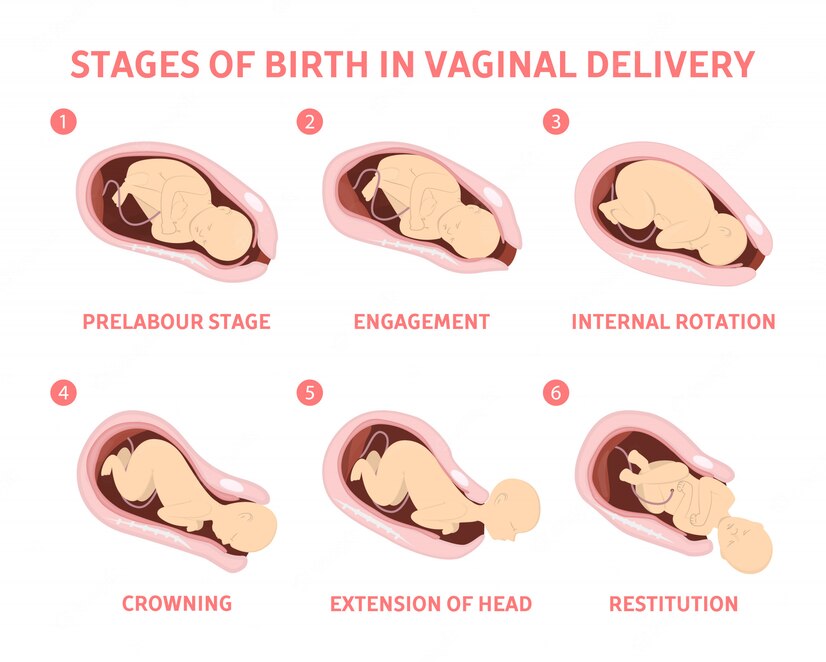Delivery - Normal

Treatment Duration
30 Minutes
------ To ------60 Minutes
Treatment Cost
₹ 25,000
------ To ------₹ 90,000

Book Appointment for Delivery - Normal
You can check Delivery - Normal Cost here.
What is Normal Delivery ?
Normal delivery is a completely natural delivery of a baby by the mother without any medical intervention.
- It is also known as the natural birth process where the mother is guided throughout the labour pains until the baby comes out through the birth canal.
- It is considered to be the most preferred means for low-risk pregnancies to avoid any risk that medication causes to mother and baby.

Expert Doctors (10)
NABH Accredited Hospitals (10)


Benefits of Normal Delivery
- Avoids risks associated with instruments used for a c-section delivery.
- Lower risk of infection for mother and child
- Quicker recovery for mother and shorter hospital stay (24-48 hours as compared to 3 days to a week post caesarean)
- The natural bacteria and microbes of the vagina transferred from mother to child boost the baby’s immune system, readying it for life outside the protected womb.
- Babies are at lower risk for respiratory problems since the labour contractions help prepare the baby’s lungs for breathing
- Normal delivery stimulates lactation because the birthing process activates numerous natural mothering hormones.
Normal Delivery Procedure
Labour that leads to a full-term pregnancy is divided into three stages, which include:
Stage 1:
It consists of three phases: latent, active, and transition.
The longest and least intense phase is the latent phase. Contractions become more frequent during this phase, helping the cervix to dilate, so the baby can come out through the birth canal.
In the inactive phase, the cervix starts to dilate more rapidly, which is why you may feel severe pain in the back or abdomen
In the transition phase, the cervix dilates to 10 cm causing strong and painful contractions every three to four minutes, and lasts for 60 to 90 seconds
Stage 2:
When the cervix has completely opened, stage 2 begins. The doctor will give you ok to push.
The contractions propel your baby through the birth canal. Fontanels on your baby’s head allow it to fit through the narrow canal.
When the child comes out, the doctor will suction the amniotic fluid, blood, and mucous from their nose and mouth.
Stage 3:
Once the baby is delivered, you enter the final stage of your labour.
The placenta is delivered to the organ that nourishes the baby inside the womb.
Your doctor will take about 5-30 minutes to take out the placenta from the vaginal canal.
Your doctor will check if the placenta is intact and no remaining fragments are present that will cause infection and bleeding.

Recovery and Post Op. care after normal delivery
- Your vitality will be monitored, and you will be shifted to the recovery room.
- The doctor will advise you to stay in the hospital for at least 2-3 days.
- You will be given postoperative instructions, which include medications that help reduce pain and infection.
- You will be advised to take plenty of rest at home too and given instructions about newborns and breastfeeding too.
Risk and complication after Normal Delivery
After giving birth, you will experience many physical and emotional changes. Although most changes will be normal, it is important to recognize signs or symptoms that require medical attention.
- You should contact your physician immediately if you have any symptoms that cause concern, including:
- Bleeding that soaks a pad every hour for two hours.
- A foul odour coming from your vagina.
- A fever of 100.4° F or higher.
- Severe abdominal pain or pain at your incision site if you had a cesarean section.
- Swelling, redness, discharge or bleeding from your cesarean incision or episiotomy site.
- An incision that begins to separate.
- Problems urinating, including inability to urinate, burning while urinating or extremely dark urine.
- No bowel movement within four days of giving birth.
- Any type of vision problem.
- Severe headache.
- Flu-like symptoms.
- Pain or redness in one or both of your breasts.
- Pain, warmth, tenderness or swelling in your legs, especially the calf area.
- Frequent nausea and vomiting.
- Signs of postpartum depression.
More Treatment options
Last Updated on: 28 May 2022
Author
HexaHealth Care Team
HexaHealth Care Team brings you medical content covering many important conditions, procedures falling under different medical specialities. The content published is thoroughly reviewed by our panel of qualified doctors for its accuracy and relevance.
Book Appointment for Delivery - Normal
Other Treatments in Your City






















